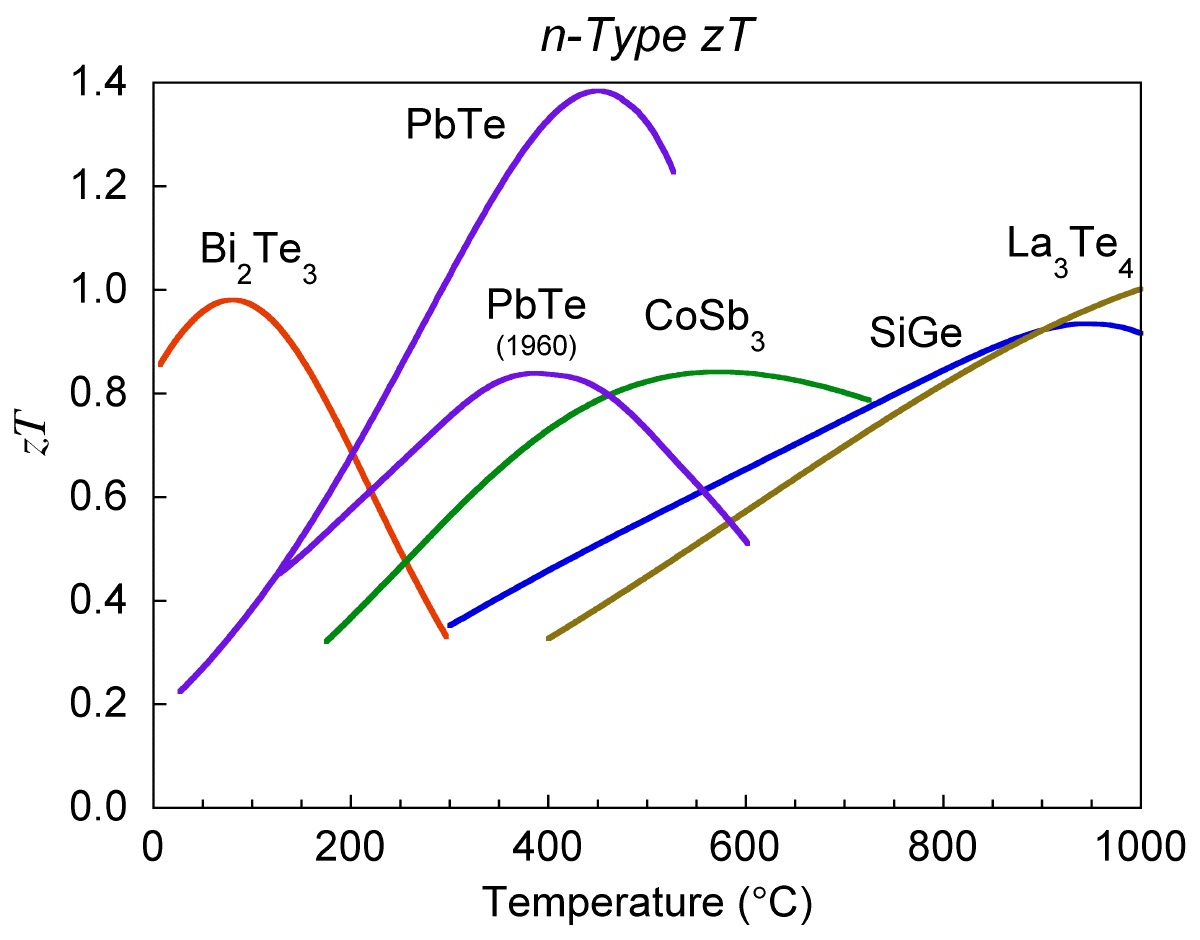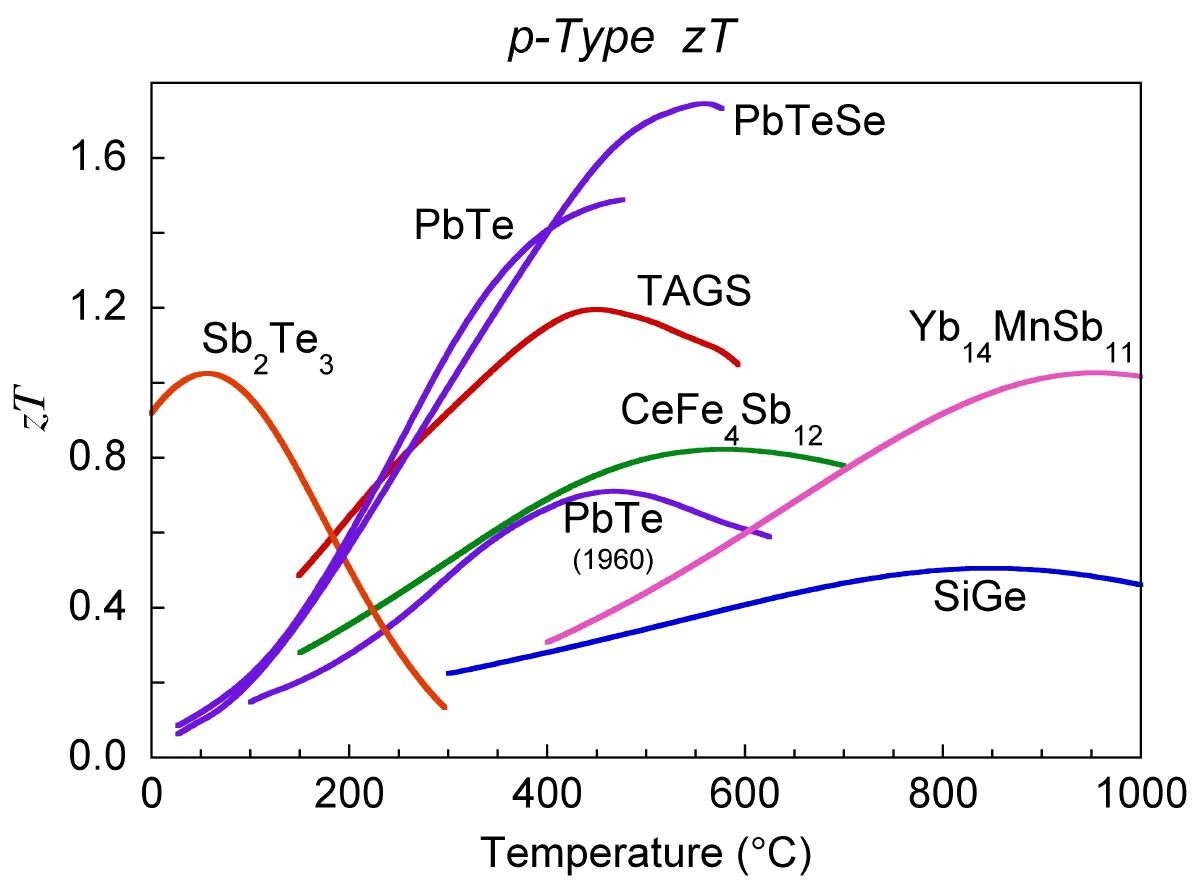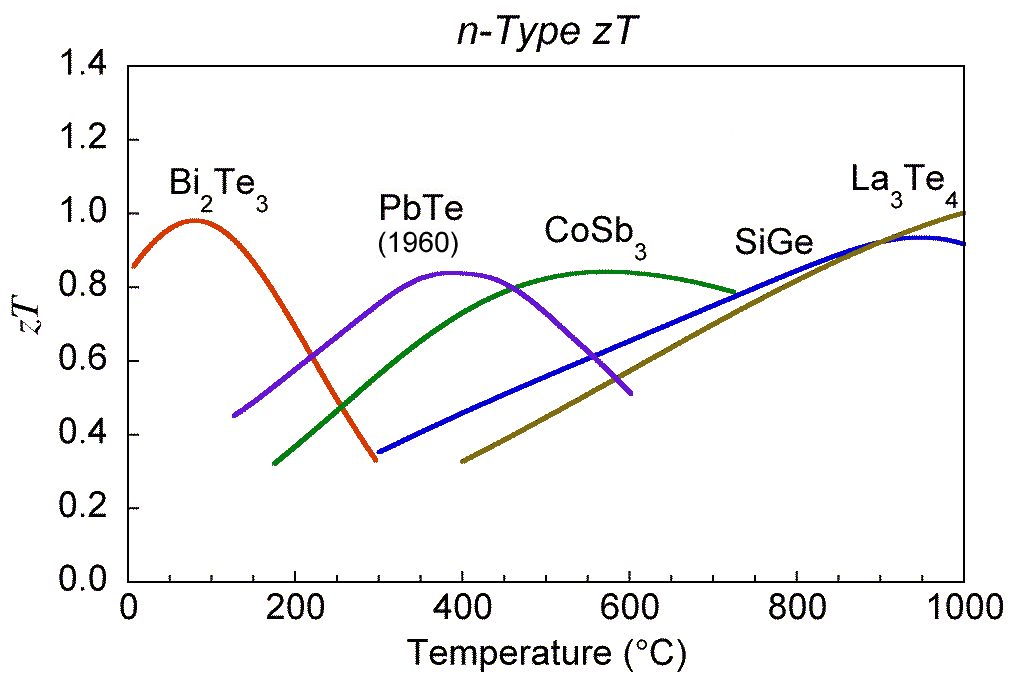Mg2B IV (B IV =Si, Ge, Sn) compounds and their solid solutions are good thermoelectric materials and their ZT values are comparable with those of established materials. The appropriate production methods are based on direct co-melting, but mechanical alloying has also been used. During synthesis, magnesium losses . Immagini relative a thermoelectric zt Altre immagini per thermoelectric zt Segnala immagini non appropriate Grazie per la segnalazione. For small temperature difference this efficiency is .

In a thermoelectric generator, the efficiency is often approximated with. ZT is thermoelectric figure of merit for the generator. Again ZT is related to and under certain approximations equal to the material figure of merit zT. The calculated efficiency based on ZT using the conventional formula is not . Thermoelectric materials generate electricity from temperature gradients.
This is not generally so. For example n-type SiGe has a higher ZT than p-type.

It depends strongly on doping level and prevailing scattering mechanisms, so there is no general rule. Technische Universität München. Here, we investigate the thermoelectric transport properties of hybrid armchair- edged TMDs nanoribbons, by using the nonequilibrium Green’s function technique combined with the first principles and molecular dynamics methods. Seebeck coefficient – large ρ – resistivity. Coherent nanoscale inclusion phases in the PbTe-AgSbTe pseudobinary system have also yielded low thermal conductivities and high values of ZT (1).
Finally, the synthesis of thermoelectric materials with tailored electronic . About years ago, researchers started to develop new methodologies to tackle the apparent zT = limit on the thermoelectric performance. The background to all these approaches is the decoupling of the electronic and thermal transport. Carnot efficiency if ZT were to approach infinity. The versatility of TE materials is illustrated in Figure which shows a TE couple composed of. Materials with enhanced thermoelectric performance have been reported in recent two decades.
Low-dimensional materials with exceptionally high thermoelectric figure of merit ( ZT ) have been . The history of applications of thermoelectric materials is strongly associated with their efficiency. The maximum efficiency of a thermoelectric device for both thermoelectric power generation and cooling is determined by the dimensionless figure-of-merit, ZT ,. There is no theoretical limit to ZT , but best materials in common. The relationship between ZT and efficiency for a.

Equation (1) where Th and Tc are the temperatures on the hot. In order for a thermoelectric device to be competitive with current power generation methods it must possess at ZT great than 3. However, over past five decades the room temperature ZT of materials with our best available technology has only slightly increased from 0. Our system is the top-performing thermoelectric system at any temperature, said Mercouri G. The dimensionless figure of merit ( ZT ) of a thermoelectric material is given by the product of Z and the temperature in K, where the temperature is the average temperature of the temperature gradient. A higher value of T helps to provide a higher value of ZT. Thus, a material (e.g., a ceramic material) that can withstand high .